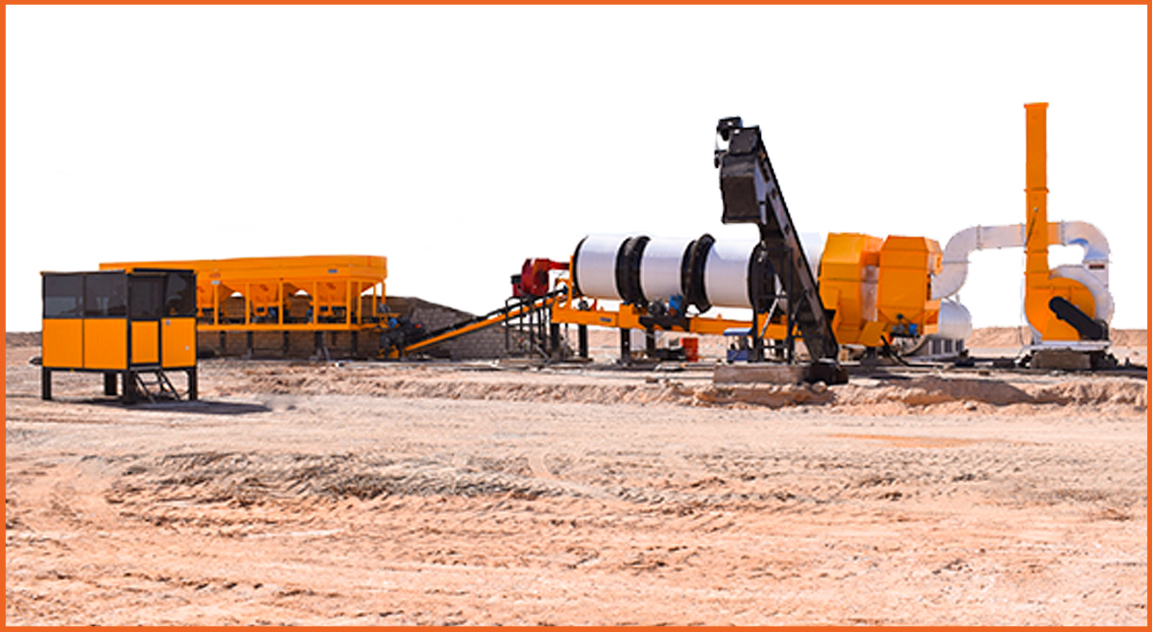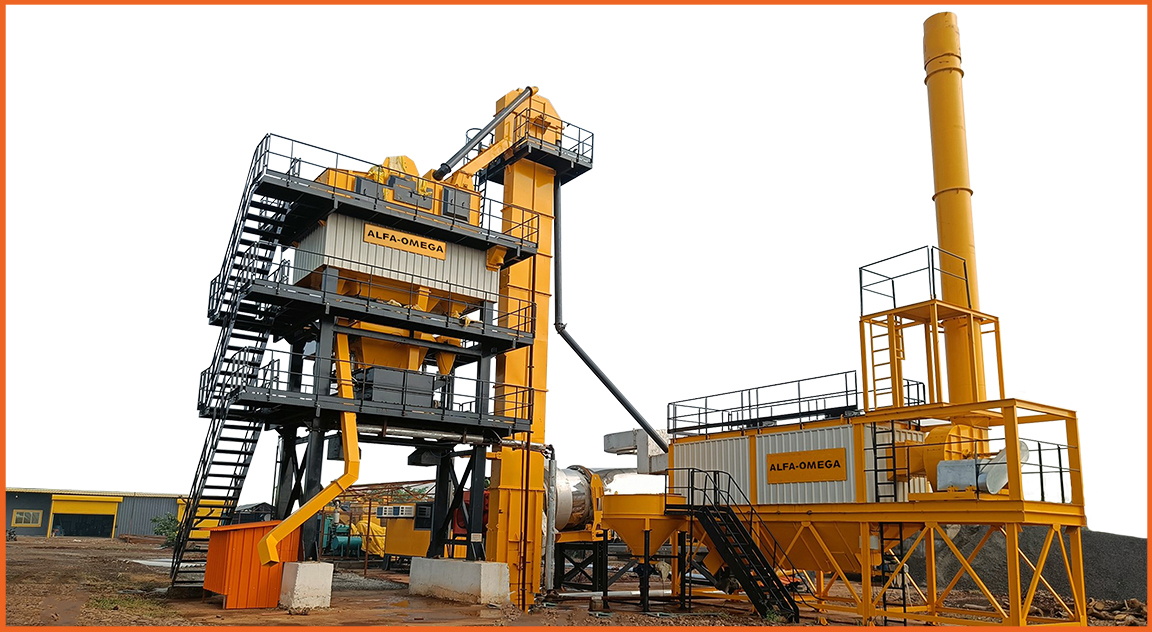Asphalt is a critical material in road construction, providing the smooth, durable surfaces we rely on for transportation. When it comes to producing asphalt, two main types of plants are commonly used: asphalt drum mix plants and asphalt batch mix plants. Each type has its unique features, advantages, and applications. In this comprehensive guide, we’ll compare the two to help you determine which one is best suited for your specific project needs.
What is an Asphalt Drum Mix Plant?
An asphalt drum mix plant is a continuous mixing type plant that produces asphalt by heating and drying aggregate and then mixing it with bitumen in a drum. The process is straightforward, efficient, and cost-effective. Here’s a closer look at its key components and how it works:
Components of an Asphalt Drum Mix Plant:
- Cold Aggregate Feeder Bins: These bins store the different sizes of aggregates used in the mix.
- Dryer Drum: This drum is where the aggregate is dried and heated.
- Bitumen Tank: The tank stores bitumen, which is then heated and pumped into the drum.
- Mineral Filler Unit: This unit adds minerals and fillers to the mix.
- Mixing Drum: This drum continuously mixes the heated aggregate with bitumen and fillers.
- Control Panel: The control system ensures precise control over the entire process.
Working Process:
- Feeding Aggregate: Aggregates of different sizes are fed into the cold aggregate feeder bins.
- Drying and Heating: Aggregates move into the dryer drum, where they are heated to the desired temperature.
- Mixing: The heated aggregates are then mixed with bitumen and fillers in the mixing drum.
- Storage and Delivery: The final hot mix asphalt is stored in silos and then delivered to the construction site.
What is an Asphalt Batch Mix Plant?
An asphalt batch mix plant produces asphalt in batches, which allows for greater flexibility in terms of mix specifications. The process involves weighing and mixing the components in separate batches. Here’s a detailed look at its components and process:
Components of an Asphalt Batch Mix Plant: 
- Cold Aggregate Feeder Bins: These bins store the aggregates.
- Dryer Drum: This drum heats and dries the aggregates.
- Screening Unit: Screens the aggregates into different sizes.
- Hot Bins: Store the hot, screened aggregates temporarily.
- Weighing Scale: Weigh the aggregates, bitumen, and fillers.
- Mixer: Mixes the weighed components to produce the asphalt.
- Control Panel: Manages the entire process with precision.
Working Process:
- Feeding and Drying: Aggregates are fed into the feeder bins and then heated and dried in the dryer drum.
- Screening: The hot aggregates are screened into different sizes and stored in hot bins.
- Weighing and Mixing: The aggregates, bitumen, and fillers are weighed and then mixed in batches.
- Storage and Delivery: The mixed asphalt is stored in silos before being delivered to the construction site.
Key Differences Between Drum Mix and Batch Mix Plants
1. Production Capacity
- Drum Mix Plant: Continuous operation allows for higher production rates, making it ideal for large-scale projects.
- Batch Mix Plant: Produces asphalt in batches, which may result in slightly lower production rates but offers more flexibility.
2. Flexibility
- Drum Mix Plant: Limited flexibility in changing mix specifications during operation.
- Batch Mix Plant: Highly flexible, allowing for different mix specifications within a short time frame.
3. Quality Control
- Drum Mix Plant: Quality control is continuous, but changes in mix specifications can be challenging to manage.
- Batch Mix Plant: Allows for stringent quality control with precise batching and mixing, making it easier to adjust and maintain mix specifications.
4. Cost Efficiency
- Drum Mix Plant: Generally more cost-effective due to continuous operation and lower initial setup costs.
- Batch Mix Plant: Higher initial costs due to more complex machinery but can result in cost savings through precise mix control and reduced waste.
5. Space Requirements
- Drum Mix Plant: Requires less space, making it suitable for projects with limited site area.
- Batch Mix Plant: Requires more space due to additional components like hot bins and mixers.
Applications
Drum Mix Plants:
- Ideal for large-scale projects requiring high production rates, such as highways and runways.
- Suitable for projects where the asphalt mix specification remains relatively constant.
Batch Mix Plants:
- Best for projects requiring high-quality asphalt with varying mix specifications, such as city roads and complex infrastructure projects.
- Suitable for projects where flexibility and precision in mix control are crucial.
Advantages and Disadvantages
Drum Mix Plant:
Advantages:
- Continuous production with high output.
- Lower initial investment and operating costs.
- Simple operation and maintenance.
Disadvantages:
- Less flexibility in changing mix specifications.
- Quality control can be more challenging.
Batch Mix Plant:
Advantages:
- High flexibility in mix specifications.
- Superior quality control with precise batching.
- Ability to produce small quantities of different mixes.
Disadvantages:
- Higher initial investment and operating costs.
- Requires more space and complex operation.
Choosing the Right Plant for Your Project
When deciding between an asphalt drum mix plant and an asphalt batch mix plant, consider the following factors:
-
Project Size and Scope: For large-scale projects with consistent mix requirements, a drum mix plant is ideal. For projects requiring varied mix specifications and high-quality control, a batch mix plant is better suited.
-
Budget: Consider the initial investment and operating costs. Drum mix plants are generally more cost-effective initially, while batch mix plants may offer cost savings in the long run through reduced waste and precise control.
-
Site Space: Evaluate the available space for the plant setup. Drum mix plants require less space, making them suitable for constrained sites.
-
Quality Requirements: For projects where the quality of the asphalt is paramount, batch mix plants provide better control and precision.
-
Flexibility Needs: If the project requires frequent changes in mix specifications, a batch mix plant offers the necessary flexibility.
Conclusion
Both asphalt drum mix plants and asphalt batch mix plants have their unique advantages and applications. Understanding the key differences and assessing your project requirements will help you make an informed decision. At Alfa Omega India, we offer a wide range of high-quality asphalt plants to meet your specific needs. Our expert team is here to guide you in selecting the right plant for your project, ensuring efficiency, quality, and cost-effectiveness.





 WhatsApp Chat
Request A Quote
WhatsApp Chat
Request A Quote
Leave a Reply
Your email address will not be published / Required fields are marked *